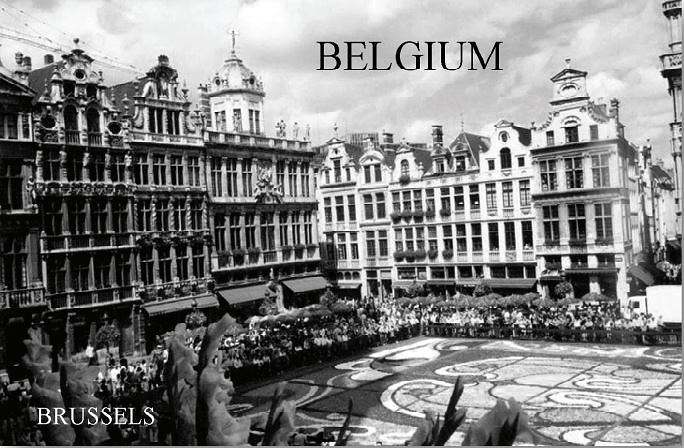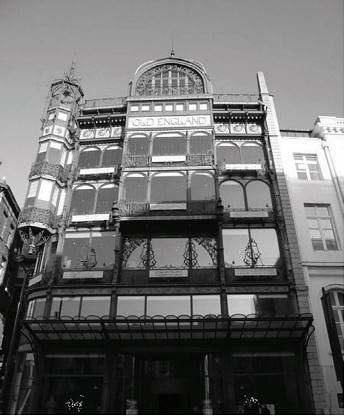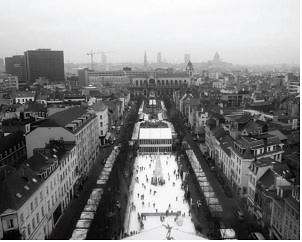
December 2009
Over the past fifteen years, I have visited Brussels at various times, primarily to visit my son, who is a freelance conference interpreter, working mostly for the European Union. My most recent trip, in mid-December, included a bonus of holiday glamour to the city’s many parks, magnificent architecture, and cultural activities. In addition, the number and variety of child-friendly places were a delight as I accompanied my grandchildren to activities throughout the city.
The Kingdom of Belgium was born in 1830, following an uprising against the policies of King William of the Netherlands, who had ruled the country since 1815. Today Belgium is a small state with a population of just over 10 million.
The country is officially divided into three language communities. A language border running from east to west separates the Dutch-speaking region of Flanders to the north from the French-speaking region of Wallonia to the south. German is spoken in a small region in the Ardenne hills in the east. The language divide dates from the fall of the Roman Empire, when Germanic tribes occupied the low-lying land of Flanders, but failed to drive out the Romanized Celts in the south.
The capital, Brussels, is an autonomous enclave within the region of Flanders. Due to its location, the city has been a center of activity for centuries, gaining importance along with the growth of its textile industry. Originally Dutch-speaking, Brussels is today officially bilingual, with French spoken by the majority of residents and English increasingly used as a lingua franca. The city is home to 1 million people.
As capital of the European Union, Brussels houses offices of the European Commission, Parliament, and Council of Ministers. The city has grown in size and stature since the establishment of the European Economic Community, the forerunner of today’s European Union, with the number of member states expanding from the original 6 to 27 today. Enlargement of the EU has meant constructing new buildings, as well as training linguistic staff due to the requirement for more translation and interpretation services. Some 25,000 people work in the institutions’ modern buildings, which dominate the Brussels skyline in the east of the city. Additionally, a huge number of lobbyists, lawyers, consultants, and reporters live and work in Brussels because of the EU. NATO is also based here.
One morning I accompanied my son to work in the massive main building occupied by the Council of the European Union, where representatives of member state governments meet to establish joint policy and draw up legislation. I was an invisible guest in the English booth, one of many cubicles equipped with state-of-the-art technology to help interpreters both see and hear the speakers. Wearing headphones, I listened to three interpreters, who among themselves covered twenty languages. Taking turns, they followed a sheet with a list of languages each member of the team was responsible for during the session. The meeting ended with a glass of champagne, as it was the last day before the holiday break. The European Parliament, as a more public institution, has observers’ sections in many of its meeting rooms, as well as a gallery in the plenary chamber for guests to follow the proceedings. Access for outsiders to all buildings requires invitation from an EU official.
The international workforce contributes to the appeal of Brussels, where over 50% of residents are expatriates. On any given day, one can select from movie offerings in half a dozen languages. The city is filled with interesting museums, gourmet restaurants, and chic cafes, along with unique cultural quarters and ethnic markets. In its historic center, Grand’ Place is one of Europe’s finest medieval squares and is on the UNESCO list of world heritage sites. People gather here on special occasions. During the Christmas holidays, a light show inspired by the architectural motifs of the surrounding old guild houses animated the building facades to the accompaniment of joyous music. Every other year in August, the pedestrian square is transformed into a multicolored carpet made of thousands of live flowers.

Musical Instruments Museum
Brussels is a treasure trove of Art Nouveau / Art Deco architecture, the most famous example being the Victor Horta house off Avenue Louise. Another one is the Musical Instruments Museum, renowned for both its building and its collection. On the frequent grey days, 19th-century arcades lift spirits with beautiful shop and cafe interiors. Strolling through the Galeries Saint Hubert, one is immediately attracted to the flamboyant rococo decoration of a shop selling chocolates by Neuhaus, one of Belgium’s legendary luxury chocolate producers. Chocolate is one of Belgium’s main food exports, sent mainly to other EU countries. The filled chocolates are famed worldwide.
One exhibition I saw was noteworthy — “COBRA.” It was at the Royal Museums of Fine Arts of Belgium and marked the 60th anniversary of the COBRA movement, created in Paris in 1948 by artists from Copenhagen, Brussels, and Amsterdam — hence the acronym. The retrospective exhibition of more than 180 works retraced the history of the movement, out of post-war darkness and into imaginative artistic expression, with the spontaneous creativity of child-like drawings. Often COBRA artists worked collectively, combining the intellects of writers, painters, and sculptors. Their spirit of collective rebellion, vibrant to this day, could be felt throughout the exhibition, which included works by Alechinsky, Appel, Bury, Corneille, Dotremont, and Jorn.
Brussels is child-friendly throughout the year. A popular spot is Technopolis in nearby Mechelen, where youngsters explore various activities such as making gigantic soap bubbles, conducting water experiments, or drawing digital butterflies that can fly. A special section for those under eight has a bank and a supermarket, where children can man the checkout counter or shop for their groceries after withdrawing money from a bank machine. Indoor playgrounds are plentiful, as it often rains in Belgium. For the same reason, the country is also very green, with plentiful urban parks.
The Royal Greenhouses hold a magnificent flower show each spring. They are one of several grand architectural projects built with the enormous wealth brought in with the establishment of a Belgian colony in the Congo in 1885. Others are Avenue de Tervuren and the Africa Museum. The Congo was granted independence in 1960, when heavy turmoil forced many Belgians to return to their home country. Other Brussels landmarks include the Atomium, built for the World Fair in 1958; the Basilica, an enormous Art Deco church; and the Cinquantenaire, a complex with a park, museum, and majestic arch built in 1880 to commemorate 50 years of Belgian independence.

Downtown skating rink
Of all the holiday attractions, the one I frequented the most with my grandchildren was a period carousel at the Christmas Market. The market is set up annually with a Ferris wheel at one end and a carousel at the other. In between are an ice-skating rink and many craft and food booths, where beer sales are brisk. In Belgium it is traditional to create a new beer or brew for special occasions, including Christmas. There are over 450 different types of Belgian beer.
Brussels has an efficient metro system that provides easy access to many parts of the city. Commissioned artworks dot the system, highlighting contemporary art from surrealism to cartoons in the underground stations. Stockel station features a mural of the legendary cartoon character Tintin. Comic strips are considered an art form and part of Belgium’s cultural heritage. A beautiful Art Nouveau building is home to the Comic Strip Museum, and comic book shops abound in Brussels.
Belgium’s most important 20th-century painter is surrealist master René Magritte. Due to open in spring 2009, a new museum dedicated to Magritte’s works is under construction next to the Fine Arts Museum on Place Royale. The five-floor museum will display more than 200 works as well as archives of the artist, known among many other works for his bowler-hat images and his painting “This is not a pipe.”
My three-week visit with my son allowed me to follow the life of an expatriate family in Brussels. I enjoyed visiting my grandchildren’s bilingual school, attending holiday parties of other families, going to the neighborhood gym and pool, and taking many walks in the well groomed neighborhoods. Members of the city’s large foreign community offer much camaraderie to one another. Perhaps most admirable of all is that, when their children meet for the first time, the opening question is “What language do you speak?” It is understood that the answer may well be a different language from those one speaks at home.
